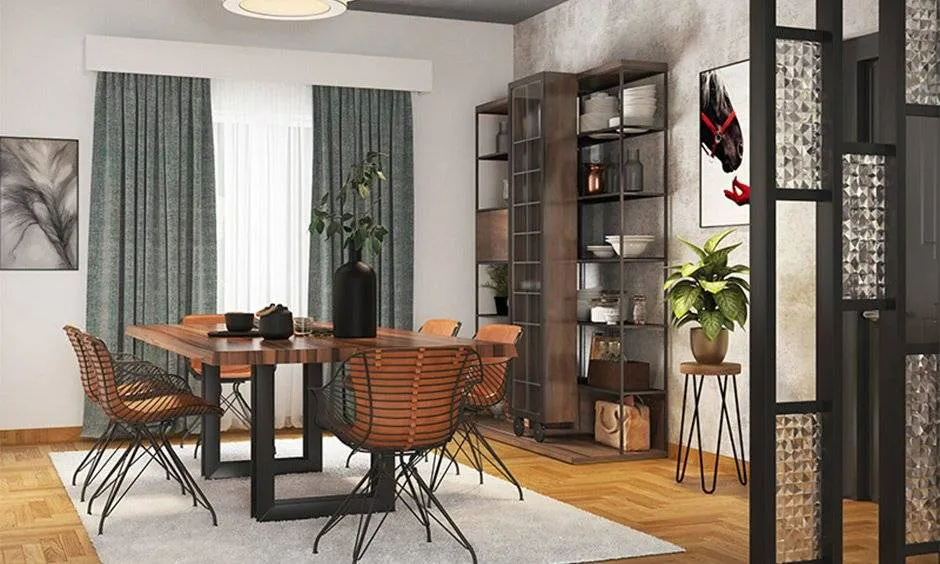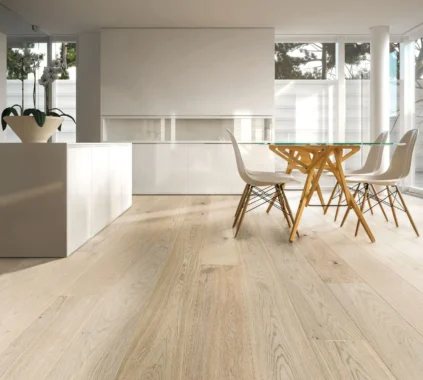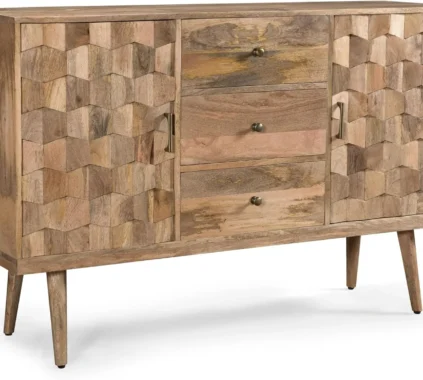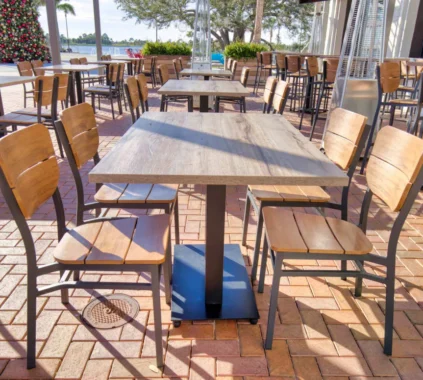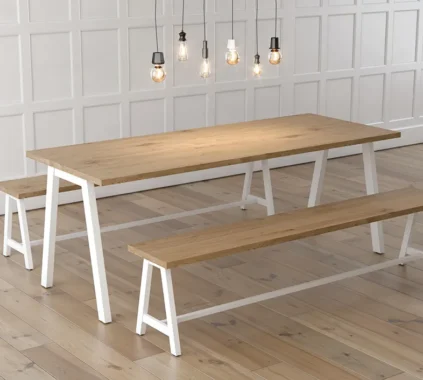Industrial dining tables have become a popular choice in both residential and commercial settings. Known for their rugged charm, durability, and sleek aesthetic, these tables blend raw materials like metal and wood to create a unique, functional piece of furniture. Whether you’re designing a trendy urban cafe, a modern home, or a stylish restaurant, an industrial dining table can add a bold statement to your space.
In this comprehensive article, we’ll explore what makes industrial dining tables stand out, the materials and design options available, and how to choose the right table to enhance your interior.
1. The Allure of Industrial Dining Tables
The industrial style is characterized by its use of raw, unfinished materials like wood, metal, and concrete, often paired with minimalist designs. The industrial dining table is a perfect representation of this trend, offering a blend of practicality and style that suits a wide range of interiors.
Do you want to visit Haridwar? travel agents in Haridwar is the right place to plan your tour. You can book your tour from here.
A. Aesthetic Appeal
The combination of solid wood tops and metal frames gives industrial dining tables their signature look. This raw, unfinished aesthetic is appealing to those who love the idea of bringing elements of the outdoors or the factory floor into their homes or businesses. The materials speak to the heritage of industrial design—functional, durable, and full of character.
B. Durability and Functionality
Industrial dining tables are designed to withstand heavy use. Their sturdy construction using solid materials like reclaimed wood and heavy-duty metal makes them incredibly durable. This makes them ideal for high-traffic areas such as cafes, restaurants, or family dining rooms where durability is a priority.
C. Versatility in Design
While the industrial style has a distinct look, these tables can be adapted to fit various design schemes, from minimalist to rustic or even contemporary settings. They work well in loft-style apartments, urban cafes, and modern homes, making them a versatile choice for anyone looking to add a bit of edge to their space.
Do you want to visit char dham? char dham tour operator is the right place to plan you Char Dham tour. You can book you tour from here.
2. Materials Used in Industrial Dining Tables
The beauty of industrial dining tables lies in the use of robust, natural materials that age beautifully over time. Here’s a look at the primary materials typically used in crafting industrial dining tables:
A. Reclaimed Wood
Reclaimed wood is a hallmark material of industrial-style furniture. It’s eco-friendly, durable, and has a unique history. Each piece of reclaimed wood has its own characteristics, from weathered textures to natural imperfections, adding authenticity and charm to the table.
- Types of wood: Popular choices for industrial dining tables include oak, walnut, and pine. These woods are known for their durability and rich grain patterns, which stand out beautifully when paired with metal legs or frames.
- Finishes: Reclaimed wood can be left unfinished for a raw, natural look, or it can be stained or sealed to enhance its color and provide additional protection against wear and tear.
B. Metal Frames
Metal is a key element in the industrial style, often used for the table’s legs or frame. Steel, iron, and aluminum are the most commonly used metals in industrial dining tables due to their strength and durability.
- Powder-coated metal: To protect against rust and wear, many metal frames are powder-coated, which also allows for different color options, such as black, bronze, or silver, depending on the desired aesthetic.
- Exposed bolts and rivets: Metal frames often feature visible bolts, rivets, or welds, which add to the rugged, utilitarian look of the table.
C. Concrete
Some industrial dining tables incorporate concrete tabletops or elements, offering a sleek and modern contrast to the warmth of wood or the edginess of metal. Concrete adds a contemporary twist to the industrial style, creating a minimalist, architectural look.
- Polished or matte finishes: Concrete can be finished to be either smooth and polished for a more refined appearance or left raw for a more authentic, industrial feel.
- Weight and stability: Concrete tops are heavy, which makes them incredibly stable and durable but requires sturdy metal or wooden frames to support the weight.
3. Popular Design Options for Industrial Dining Tables
Industrial dining tables come in various shapes, sizes, and configurations to suit different needs and spaces. Here are some of the most popular design options:
A. Rectangular Industrial Dining Tables
The rectangular design is one of the most common and practical shapes for dining tables. These tables can seat anywhere from four to ten people, making them ideal for large families or social gatherings.
Do you want to visit Indiar? tour operator in India is the right place to plan your tour. You can book your tour from here.
- Metal frame with wood top: One of the most popular configurations is a solid wood top paired with a metal frame or legs. This combination creates a strong, balanced design that can fit into a variety of interiors.
- Expandable options: Some industrial dining tables come with extension leaves, allowing for flexible seating arrangements when hosting larger groups.
B. Round Industrial Dining Tables
For smaller spaces or intimate dining settings, round industrial dining tables offer a stylish alternative. The absence of sharp corners allows for easier movement around the table and creates a more inclusive dining experience.
- Pedestal base: Round tables often feature a pedestal base made from metal, which provides more legroom for diners and gives the table a sleek, streamlined appearance.
- Mixed materials: Some round tables combine concrete tops with metal bases or wood tops with iron legs, creating a balanced yet striking design.
C. Trestle and X-Frame Tables
Trestle tables and X-frame tables are popular in industrial designs due to their sturdy construction and aesthetic appeal. These tables feature bold, geometric bases that add to the industrial style’s rugged charm.
- Wooden trestle bases: Often made from reclaimed wood, trestle bases provide a rustic yet industrial look. They also offer plenty of legroom, making them ideal for family dining or commercial use.
- Metal X-frames: These frames provide a strong, supportive structure for heavier tabletops like concrete or thick wood slabs. The X-frame design is both functional and stylish, adding a bold visual element to the table.
4. Choosing the Right Industrial Dining Table
Selecting the perfect industrial dining table involves considering the size, design, materials, and intended use. Here are some factors to keep in mind:
A. Size and Space Considerations
It’s essential to choose a dining table that fits comfortably within your space. For smaller dining areas or urban apartments, a compact round or square table may be the best option. For larger spaces or open-plan dining areas, a rectangular or trestle table can make a bold statement.
- Seating capacity: Consider how many people you typically host and whether you need an expandable option for larger gatherings.
- Room layout: Ensure that the table leaves enough room for chairs and allows diners to move around comfortably.
B. Matching the Table to Your Decor
While industrial dining tables are versatile, it’s important to select a design that complements your overall interior style. For a more cohesive look, choose materials and finishes that tie in with other elements of your decor, such as exposed brick walls, metal light fixtures, or reclaimed wood shelving.
- Modern-industrial: Pair a concrete tabletop with sleek metal legs for a more modern take on industrial style.
- Rustic-industrial: Opt for a reclaimed wood table with distressed metal accents for a warmer, more lived-in feel.
C. Durability and Maintenance
Industrial dining tables are built to last, but regular maintenance is key to preserving their appearance and functionality. Wood tables may need to be re-sealed periodically, while metal frames can benefit from occasional cleaning to prevent rust. Concrete tops should be sealed to prevent staining from spills.
- Wood care: Use coasters and placemats to protect the wood surface from heat and moisture. Clean regularly with a damp cloth and mild soap.
- Metal care: Metal frames should be cleaned with a soft, dry cloth to remove dust and grime. Powder-coated frames are especially low-maintenance but may require touch-ups over time.
5. Conclusion
An industrial dining table is more than just a piece of furniture; it’s a statement of style, durability, and practicality. With its combination of natural materials, robust construction, and versatile design options, an industrial dining table can elevate the aesthetic of any space, whether it’s a modern loft, a rustic home, or a stylish urban cafe. By choosing the right materials, size, and design, you can create a functional yet stylish dining area that will stand the test of time.

